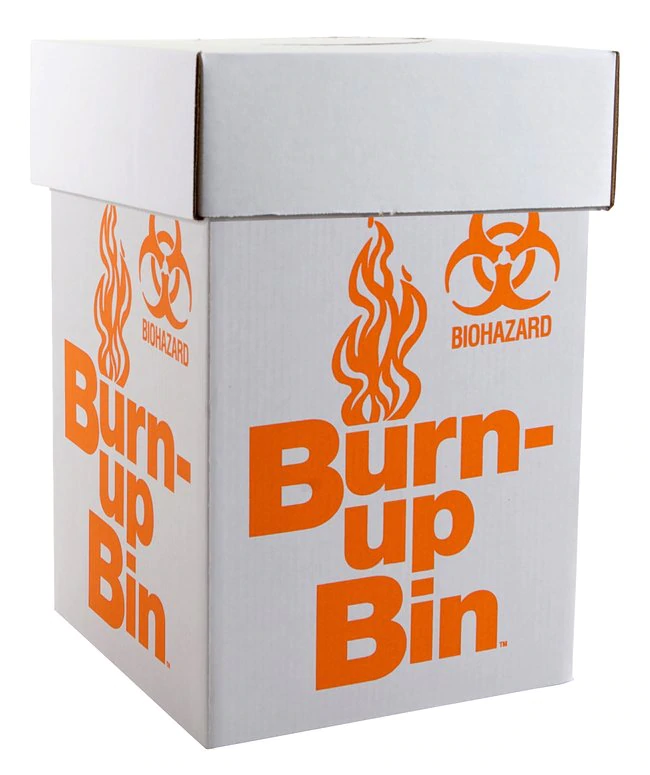Last Revised: April 02, 2025
EHRS is responsible for the development and implementation of safe and effective management practices for all waste categorized as "infectious" by the Pennsylvania Department of Environmental Protection. Our goal is to manage the handling, sorting, storage, and disposal of all infectious waste generated at the University of Pennsylvania in a safe, environmentally sound manner that complies with all relevant regulations.
General Biohazardous Waste Guidelines for the University:
The use of Biohazard Burn-up Boxes is prohibited at Penn!
These boxes are challenging to dispose of. The cardboard is inappropriate to be used in tissue culture rooms. See below of other options to dispose of biohazard waste.
Sharps
- ALL syringes (with and without the hypodermic needle attached), needles with attached tubing, suture needles, blood vials, razor blades, and scalpels MUST always be discarded in a rigid, puncture resistant and leak-proof sharps container, regardless of use. [25 Pa. Code § 284.413]


- Used sharps: Broken glass, Pasteur pipettes, serological pipettes, pipette tips, culture dishes, slides, cover slips, other broken or unbroken glass or plasticware, and other pointed devices that may puncture a bag that have been in contact with infectious agents or that have been used in animal or human patient care or treatment MUST be discarded in a puncture resistant and leak-proof sharps container. [25 Pa. Code § 271.1 Definitions: Infectious Waste]
- Sharps waste that has been in contact with recombinant material MUST be discarded in a puncture resistant and leak-proof sharps container. [NIH Guidelines for Research Involving Recombinant DNA Molecules]
- Sharps waste (EXCLUDING syringes (with and without the hypodermic needle attached), needles with attached tubing, suture needles, blood vials, razor blades, and scalpels) that has NOT come in contact with infectious agents or that has NOT been used in animal or human patient care or treatment, or recombinant material MAY be discarded in a glass/plastic waste cardboard box lined with a heavy weight plastic liner or sharp container.

Click on the link below the poster to see detailed guidance on Proper Disposal of Sharp Objects:

Proper Disposal of Sharp Objects.pdf
Other Biohazardous Waste
-
Biohazardous "soft" waste must be discarded in red or orange biohazard bags.
-
DO NOT use clear or other colored bags to collect biohazard waste.
-
"Soft waste" includes:
- Gloves
- Tissue culture flasks
- Centrifuge tubes and other plastic tubes
- Other non-sharps material that has come in contact with infectious, human, or recombinant material
-
Infectious waste autoclave bags, red bags, sharps containers, and anything else with the universal biohazard symbol affixed to it DOES NOT belong in general trash (dumpster) or recycling under any circumstances! (See the FRES Waste Management and Recycling page for current recycling guidance)
-
CLICK on the posters below to see additional guidance for biohazardous waste segregation requirements.



Waste Flow Chart 8x11 2025.pdf Know Where to Throw 2025.pdf Dumspter Poster.pdf
Additional Resources
See Section 8 of the Biosafety Manual for more on infectious waste management and procedures.